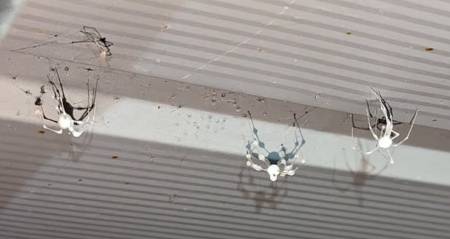The way this fungus takes over spiders is nothing short of disturbing.
A bizarre new fungal species that effectively turns spiders into “zombies” has now been detected inside homes across the US — the first time it has ever been reported in the country. Earlier this year, scientists identified the species as Gibellula attenboroughii after it was found infecting cave-dwelling orb-weaving spiders. These infected spiders were often discovered clinging motionless to cave walls and ceilings, with the fungus using them as its host.
The infection process is chilling. Once the fungus takes hold, it alters the spider’s behavior in much the same way as the infamous “zombie ant fungus.” The host is forced to move to an exposed, elevated spot, allowing the spores to spread more effectively on air currents. From there, a neurotoxin kills the spider, while antimicrobial chemicals preserve its body long enough for the fungus to grow inside and feed on its nutrients.
Harry Evans, a researcher with the Center for Agriculture and Bioscience International, explained to Live Science just how vast and little understood the fungal kingdom still is: “There’s a lot more fungi to find. The fungal kingdom could be up to 10, 20 million species, making it the biggest kingdom by far, but only one percent have been described.”
Evans added that fungi’s role in regulating spider populations and the unusual metabolites they produce deserve much closer study.
Though unsettling, scientists stress that the fungus poses no risk to humans. João Araújo, a mycologist at the Natural History Museum of Denmark, reassured that: “Infecting humans would require many, many millions of years of genetic modifications.”

Still, their sudden appearance in US homes has understandably sparked unease among residents.
Photographer Ben Mitchell, who first encountered one of these so-called “zombie” spiders in Scotland in July 2024, described the eerie sight to The Wall Street Journal: “I saw this amazing candyfloss thing stuck to the underside of a leaf. It had a membrane of threads around it holding it in place, and all I could see of the spider was its toes sticking out.”
While their appearance is spine-chilling, researchers believe the fungus may actually hold promise. Evans suggested that the compounds it produces could serve as a “medical treasure chest,” potentially leading to breakthroughs in antibiotics or other treatments.
